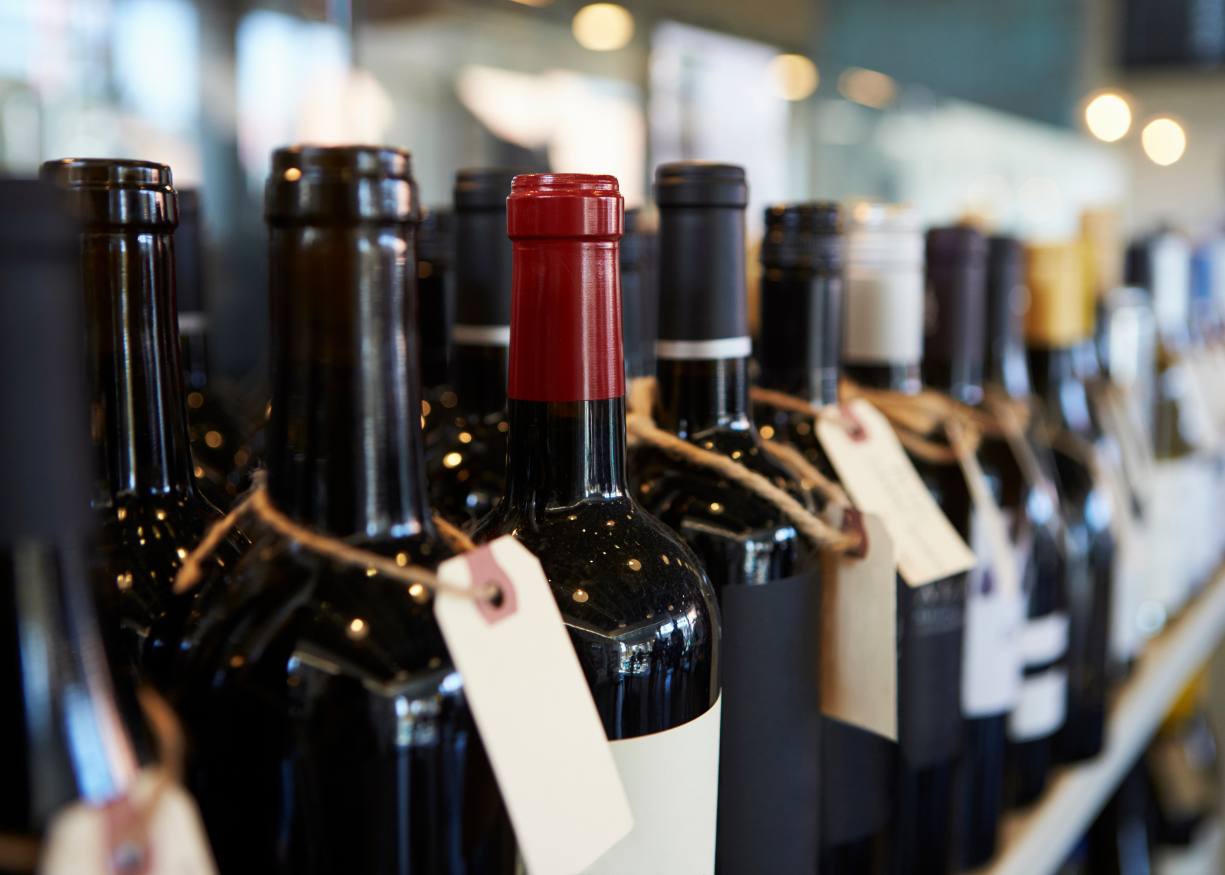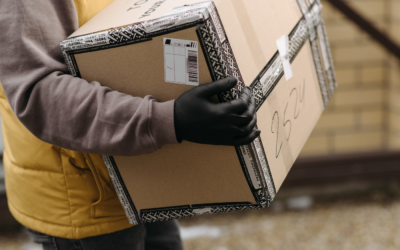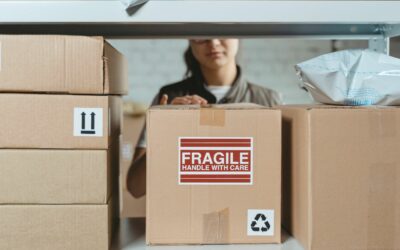La logistique du vin requiert un véritable savoir-faire. Sa fragilité tient d’abord du conditionnement en bouteilles de verre qui augmente les risques de casse. De plus, le goût de ce produit vivant peut évoluer (en bien ou en mal) sous certaines conditions de conservation. Sa température de transport doit être contrôlée tout au long de la chaîne logistique afin de ne pas altérer sa qualité et ses propriétés gustatives. L’entreprise logistique assurant ce type d’expéditions particulier doit donc avoir des connaissances spécifiques, une main d’œuvre compétente et un équipement adéquat. Voici 8 exigences fondamentales à respecter pour optimiser le transport de vin et spiritueux.
1. Maintenir la bonne température pendant le transport et le stockage
Dans une cave, les bouteilles de vin s’épanouissent grâce à une certaine fraîcheur. Même si la température varie d’une saison à une autre, le changement n’est jamais brutal. Un véhicule de transport doit donc reproduire les mêmes conditions de conservation pour protéger le produit de toute altération.
La température appréciée par les vins et spiritueux varie entre 12 et 16 °C. Le mode de livraison doit donc être équipé d’un dispositif permettant de mesurer et de réguler la température, évitant tout changement brusque. Cela garantit une qualité de service vis-à-vis des consommateurs et le respect du travail des professionnels du vin.
2. Bien choisir l’emballage
Une fois conditionné dans des bouteilles en verre, le vin peut être transporté dans deux principaux types d’emballage : les cartons et les caisses. Ce choix est crucial puisqu’il doit assurer une résistance aux chocs et aux vibrations pendant le transport. Une casse durant le trajet entraîne non seulement la perte d’une bouteille, mais aussi la répartition du liquide en dehors. Cela abîme le carton et les étiquettes des autres bouteilles.
Il est donc important de choisir un emballage qui protège la marchandise durant le transport, la manutention et le stockage. En plus d’être solide, il doit être résistant à l’humidité. Le calage logistique à l’aide d’alvéoles ou de plaques en carton est recommandé pour livrer du vin. Il permet de séparer les bouteilles entre elles et de leur éviter de s’entrechoquer.
3. Positionner correctement les bouteilles de vin durant chaque trajet
La position horizontale est idéale pour le stockage de bouteille de vin. Cela sert à garder le contact entre le liquide et le bouchon. L’objectif ? Lui éviter de sécher et de se rétracter, ce qui favorise une oxydation rapide du vin.
Si une bouteille est stable dans une cave ou un entrepôt, elle est constamment secouée dans un véhicule de livraison. Couché à l’horizontale, le vin ne cesse de remuer contre le bouchon. Et cela est très mauvais pour sa conservation. Pendant le transport, c’est donc la position verticale, bouchon vers le haut, qu’il faut privilégier. C’est d’ailleurs pour cette raison que l’on trouve la mention « transport this side up » ou « ce côté en haut », en français, sur les cartons contenant des boissons alcoolisées. Elles indiquent le sens d’origine dans lequel il faut positionner ces derniers.
Le transport des grands crus tels que le vin de Bordeaux est plus complexe. Comme dans un casier à bouteilles, celles-ci sont emballées dans des cartons ou dans des caisses en bois et couchées à l’horizontale. Aucune mention sur le sens de placement des contenants n’est indiquée. Lorsque la température est maîtrisée à la perfection et que le trajet n’est pas trop long, cela n’est pas gênant. Mais dans des cas extrêmes, les manutentionnaires doivent ouvrir les caisses et remettre les bouteilles à la verticale pour garantir une livraison sûre.
4. Sélectionner le bon mode de chargement et de déchargement
Si le nombre de cartons de vin à livrer est réduit, le chargement doit se faire du côté opposé à celui emprunté par le tuyau d’échappement. Situé sous le coffre, celui-ci transmet une forte chaleur à l’intérieur des véhicules les mieux isolés.
En cas de chargement complet, en revanche, il faut isoler les caisses avec un bon isolant tel que des plaques en polystyrène ou en polyuréthane. Recouvrir la marchandise avec une épaisse couverture offre encore plus de protection. Cela permet de maintenir le plus longtemps possible la température initiale.
5. Protéger son capital vin des variations de température lors d’un transport longue distance
Un arrêt prolongé en plein soleil peut détruire la qualité de votre vin. Il est donc primordial de choisir des emplacements à l’ombre dans les airs d’autoroute. Si le trajet est très long et que le chauffeur doit se reposer, il est primordial de stationner la cargaison dans un parking couvert. Cela s’applique aussi aux vacanciers qui reviennent de leur séjour avec pour souvenir, une bouteille de grand cru.
Le vin supporte aussi mal les fortes chaleurs que les températures très basses. En période de grand froid, cette matière vivante peut geler. Cela a pour conséquence de faire éclater les bouteilles. Le risque est aussi de voir les bouchons sortir des goulots. Un positionnement à la verticale peut sauver la mise en gardant le liquide à l’intérieur des bouteilles (si elles n’explosent pas). Pour récupérer le produit, un long chambrage est nécessaire. Toutefois, cela ne garantit pas le maintien d’une bonne qualité.
Le transport du vin par voie maritime exige que la cargaison soit placée dans un conteneur climatisé. Ce dernier doit aussi être équipé d’un système d’enregistrement de température permanent. Le but est de vérifier à l’arrivée qu’il n’y a pas de risque de détérioration. En effet, une livraison par bateau peut mettre les vins et spiritueux devant plusieurs dangers :
- une exposition durable au climat tropical sur le pont du navire ;
- un stockage dans des soutes surchauffées par des machines ;
- une longue attente sur des docks avant le départ du cargo.
6. Soigner le déchargement de ses cartons de vin
Dès l’arrivée, les bouteilles de vin doivent être déchargées le plus rapidement possible. Elles doivent ensuite être stockées dans une cave ou un entrepôt frais et humide. Un placement immédiat en position horizontale est alors nécessaire pour que le liquide reprenne contact avec le bouchon. Cela lui évite de se dessécher, ce qui cause plus de déboires que l’effet de la chaleur sur le vin.
7. Penser à la logistique du dernier kilomètre
La livraison en zone urbaine est souvent contraignante. Pour un produit fragile qui supporte mal la stagnation et les variations de température, les embouteillages représentent un sacré danger. C’est pourquoi, il est important d’anticiper les problématiques liées à la logistique du dernier kilomètre. Cela passe par une bonne organisation des tournées de collecte et de livraison, la prise en compte des plages horaires où la circulation est fluide et le recours à des modes de transport adaptés aux centres-villes.
Travailler avec un réseau de partenaires permet d’avoir accès à des plateformes logistiques urbaines. Cela permet aussi d’avoir un large choix en termes de véhicules de transport afin de faciliter l’acheminement des bouteilles vers le consommateur final.
8. Respecter un délai de repos avant la dégustation
Le voyage est une épreuve fatigante pour le vin. Trois à quatre semaines de repos lui sont nécessaires pour reprendre sa forme originelle. Un grand cru demandera plusieurs années de patience pour bien mûrir et s’épanouir.
Si vous êtes pressé, vous pouvez stabiliser votre vin sous une température de 4 à 8 °C (au réfrigérateur pour les particuliers) pendant 1 à 3 h. Il vous faudra ensuite le ramener à une température propre à la dégustation, entre 11 et 14 °C. S’agit-il d’un millésime ancien ? Prolongez un peu plus son séjour dans le froid.
9. Faire appel à un professionnel du transport de vin et spiritueux
Le dernier conseil que nous pouvons vous donner est de bien choisir votre transporteur de vin. Il aura pour responsabilité de maintenir la qualité de votre produit fragile, ce qui demande des compétences poussées et des équipements spécifiques.
D&figroupe vous propose un service adapté et spécifique. Nous réservons un traitement particulier aux vins et spiritueux pour préserver toutes leurs propriétés gustatives initiales. Vous pouvez compter sur notre large réseau de partenaires logistiques pour trouver des solutions sur mesure, prenant en compte tous vos besoins et contraintes. De plus, notre service de douane vous accompagnera dans vos formalités administratives et légales pour le transport international de vos vins et spiritueux.
Sources :





0 commentaires